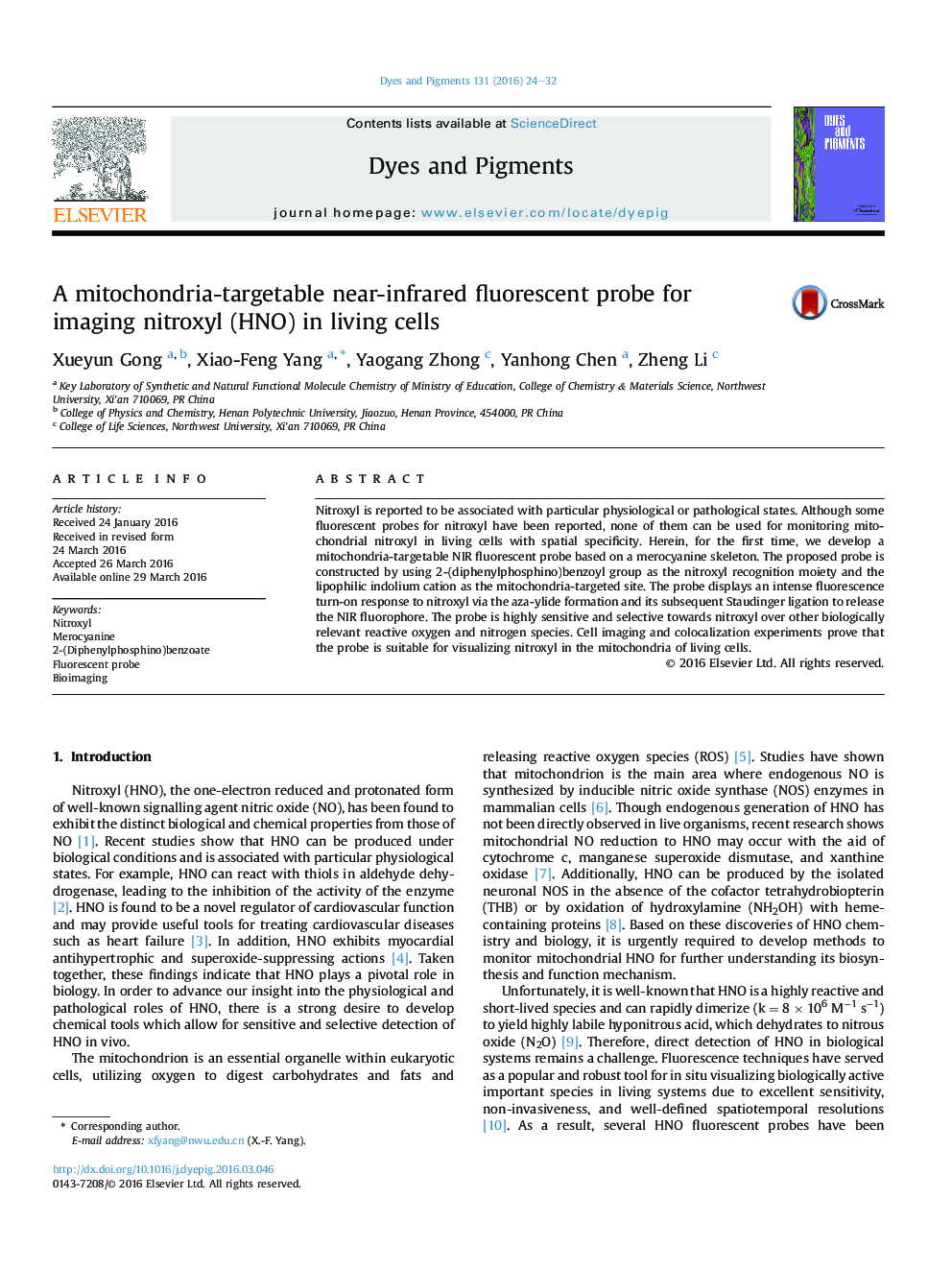| Article ID | Journal | Published Year | Pages | File Type |
|---|---|---|---|---|
| 175274 | Dyes and Pigments | 2016 | 9 Pages |
•A near-infrared fluorescent probe for nitroxyl has been constructed.•The proposed probe is constructed by using 2-(diphenylphosphino)benzoyl group as the recognition moiety.•The proposed probe is highly selective toward nitroxyl over other biologically relevant reactive species.•Preliminary experiments proved that the probe is suitable for visualizing HNO in mitochondria of live cells.
Nitroxyl is reported to be associated with particular physiological or pathological states. Although some fluorescent probes for nitroxyl have been reported, none of them can be used for monitoring mitochondrial nitroxyl in living cells with spatial specificity. Herein, for the first time, we develop a mitochondria-targetable NIR fluorescent probe based on a merocyanine skeleton. The proposed probe is constructed by using 2-(diphenylphosphino)benzoyl group as the nitroxyl recognition moiety and the lipophilic indolium cation as the mitochondria-targeted site. The probe displays an intense fluorescence turn-on response to nitroxyl via the aza-ylide formation and its subsequent Staudinger ligation to release the NIR fluorophore. The probe is highly sensitive and selective towards nitroxyl over other biologically relevant reactive oxygen and nitrogen species. Cell imaging and colocalization experiments prove that the probe is suitable for visualizing nitroxyl in the mitochondria of living cells.
Graphical abstractFigure optionsDownload full-size imageDownload as PowerPoint slide
